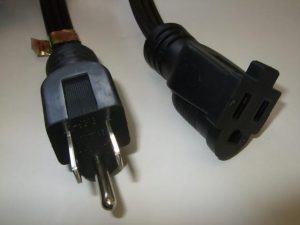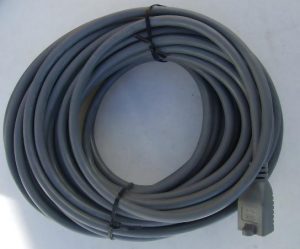

Tips to Prevent Damage from Faulty Extension Cords
You bought a new tool for your garage, but the cable is too short, and it can’t reach the electrical socket. The same problem can happen if you buy a new appliance. Let’s say that you purchased a new refrigerator, and you want it in a particular corner of your kitchen. The cord of your fridge cannot reach the power outlet, but you can’t change the position of your appliance.
That is where a flat extension cord comes into play! These cables are extremely useful in situations where you need electricity in a particular location. But the cord length is preventing you from using the socket directly.
All that you need is to find the right extension cord. Whether it is a NEMA 5-15R or another model you find suitable, these units can do a great job. The best way for an extension cord to deliver what’s expected from it is to use it properly.
In this article, we are giving you tips on how to prevent damage from faulty extension cords. Take a look at things you should do, and those to avoid while handling these units.
Don’t Use a Damaged Cord
The best way to prevent damage from faulty cords is not to use faulty cords! Yes, it is that simple, but many people do not stick to this rule in practice. The rule is that you can repair a broken cord once, and only if we are talking about a simple repair.
You may be using the strongest cable, such as the 12 gauge extension cord, but if it breaks, the safest thing to do is to purchase a new unit. If you notice a cord with duct or electrical tape, you know that it was already damaged. That increases the risk of fire and other mishaps. Additionally, these cables do not meet OSHA requirements, which may be important for professional job sites that need to meet the regulations.
Always Check the Power Rating

If you are dealing with power cords, you should learn a thing or two about the amperage rating of your unit. Here is how this works – each appliance requires a certain amount of power. The manufacturer describes that with the amperage rating. At the same time, each extension cable can only handle a particular amount of power.
The general rule is the more amperage, the better. For example, if you have a 30 Amp extension cord, it can handle two devices that require 14 amps each to work. You should never overload the power cord because it may lead to fires, and it is a huge safety risk.
Additionally, you should also consider the voltage. It may be wise to go for an extension cord with switch that supports dual voltage. That way, you will be sure the product will work anywhere in the world. The crucial thing, however, is not to use the wrong voltage as that can damage both the cord and electrical products you plugged into it.
Never Plug One Cord into the Other

People often think that all that matters is to get their appliances running. That is why they don’t hesitate to increase the number of available sockets by plugging one power cord into the other. Unfortunately, that is one of the common mistakes that people make.
Even if your circuitry can handle high amperage, each power cable has limited capabilities. For example, you may have purchased a 20 amp extension cord. The three sockets it provides are not enough, which is why you connected another power cord to it, and you now have five sockets at your disposal.
The experts recommend not going over a 100-feet length for power distribution. Let’s say that the two cords are longer than that when combined, and you’ve got yourself a safety risk. That may lead to overheating, as well as voltage drops and power surges.
That may lead to cord failure, but also appliance failure, fire, or electrocution. Professionals that work on construction sites should know that OSHA regulations do not allow using connected extension cords.
Don’t Attach Power Cords with Staples or Nails
If you think about it, the extension cords have a smart design. They manage to distribute electricity while providing the necessary protection and flexibility. The only thing users should ensure is to keep the insulation undamaged.
An error that many people make is that they use staples or nails to keep extension cords hooked to their walls. Each staple that goes through the insulation damages the cord and increases the chances of equipment failure and other issues. Even if you use a strong 10 gauge extension cord, it won’t be resistant to nails and staples. Instead of using them, go with cord clips, which can prevent the cord from lying around the floor while keeping the cable itself undamaged.
While we are on the topic, let’s mention that you shouldn’t have cords going through doorways or under carpets. The doorways are an obvious thing – each time you close a door; you will damage the insulation. It is only a matter of time when you will expose the wires, and that leads to significant damage.
As to carpets, you may think the cords are safe below the surface, but the truth is that people can still damage them. Imagine your 220 extension cord around the holidays when more people are in your home. It can be incredibly resistant, but after getting stepped on thousands of times, the insulation will tear apart.
Ultimately, extension cords are incredibly helpful products. They can come in handy to have all your appliances working. However, if you want an optimal power setup, you should stick to the rules mentioned in this article. That way, you will avoid faulty extension cords, which will prevent damage and keep you safe.
Remember, it is much better to add electrical outlets where you need them. Although they are reliable, power cords should remain a temporary solution that will help you to overcome the issue until you find a permanent way of handling your electrical setup.
